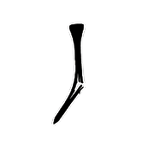Pro Bunker Technique
5 minIn this video, Rob and Trillium discuss the true physics of sand play and what you need to focus on to execute pro-caliber bunker shots.
What the Pros Do:
• Played with either a sand wedge or lob wedge.
• The most important factor in bunker is controlling the entry point in the sand. On successful bunker shots, the club should make contact with the sand at a point 3 1/2 - 4 inches behind the trail edge of the golf ball.
• Pros adopt a strong and consistent setup routine.
• Open the leading edge of the wedge to add loft.
• Wide stance with shoulder and pelvis lines square to the target line.
• Lean slightly towards target with more weight in lead leg.
• Lower the hands at address to lower the handle of the club. This counteracts the opening of the leading edge and points the face of the wedge back to the target.
• Create a strong, stable base with your lower body to avoid swaying off the ball and excessive head movement.
• In the bunker swing, you want to create a very centered pivot of the upper body - very little lateral movement.
• The lead wrist extends (cups) as the club contacts the sand and travels under and past the ball. This wrist extension adds loft and ensures that you use the back edge on the sole of the wedge. This properly employs the bounce on the sole, ensuring that the wedge glides through the sand vs. digging.
• You need a big turn because you need to generate a lot of speed with your body in order to overcome the resistance of the sand. For an eight or ten yard carry out of the sand, the pros swing upwards of 70 mph.
• The attack angle is fairly steep. The goal is to strike the sand 3-4 inches behind the ball. The sand, not the club pushes the ball into the air.
• On firmer or hard-packed sand, square the clubface more to ensure that the leading edge digs under the ball. You may also want to contact the sand a little closer to the ball and reduce the swing speed, as the ball will come out hotter.

























